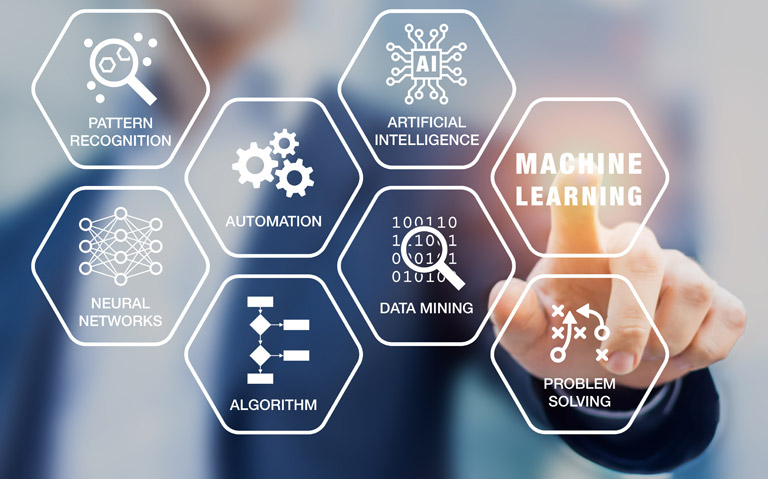Machine learning (ML) is a subset of Artificial Intelligence (AI) that enables a program or software to learn from experiences. It can also improve itself without being explicitly ‘told’ or programmed to do so.
With machine learning, a computer can learn automatically. In a way, ML emulates a human’s ability to learn. And as such, a computer with machine learning capabilities can operate with minimum human supervision or intervention. It can also make predictions and provide insights that scientists and engineers can use in making decisions.
All this is made possible by feeding the algorithm massive amounts of data. Machine learning then enables computers to analyze and interpret patterns found in those data. This process is what makes a computer learn and does it pretty much on its own.

If you’re a beginner at machine learning, understanding the basics of algorithms should be near the top of your ‘must-have skills’ list.
Machine Learning Tips for Beginners
AI and ML are part of the so-called disruptive technologies expected to change consumer experience and how industries and businesses operate. Suffice it to say, that people who work in the field of AI and others related to it like data science are among the most sought after today and in the foreseeable future.
Learning something new can be overwhelming when you don’t know where to begin. But a blueprint on where, how, and what to begin can help you reach your goals. And with that, here are a few things to remember when starting to learn machine learning:
1. Knowledge of Programming Languages
Knowing several programming languages would be ideal, but don’t be intimidated as it’s not as painful as it looks. Find programming languages that are relatively easy to learn, popular, and, most importantly, typically used in data science.
If you want to learn how to use machine learning to solve problems, train predictive models, etc., you need Java, R, JavaScript, C++, and Python. Python is particularly useful, and if you want to get guidance for this program, there are online resources you can check out, learn from, and consult.
The programming languages mentioned are necessary for developing algorithms for such machine learning concepts as regression, time series modeling, etc. The languages can also be used to train and evaluate machine learning, integrate with other codes, debug, and others.
2. Remember That It’s A Numbers Game
You’ll be studying numbers, but it doesn’t mean you have to be an expert-level statistician. Machine learning involves a lot of data processing, so you’d need to understand some key statistical concepts. These concepts can go a long way in helping you understand how and when to use data for machine learning effectively.
Raw data at this point is unusable, but there are experiments that are designed to make heads or tails of it. The experiments can help you collect usable information from raw data, essentially converting unusable data into something akin to data gold. The result is valuable information that can help managers make smart business decisions. And to correctly interpret the results your machine learning model spits out, a knowledge of statistics is vital.
Some statistical concepts you should prioritize understanding are regression, probability, mean and distribution, mean square error, and a few others needed to interpret data into usable information.
3. Know How to Handle Big Data
Machine learning runs on data, basically. So, you’ll be dealing with massive amounts of data to use for your algorithms and produce valuable output. You’ll be collecting, assessing, formatting, interpreting, converting (and so on) your data. More so, you’ll be storing large amounts of it and figuring out the best way to access and process them efficiently.

Data for machine learning are grouped into four main types: text, numerical, categorical, and time-series. Handling all types of data might present some challenges, so having a deep understanding of the different types can give you a leg up.
4. Be Proficient At Exploratory Data Analysis (EDA)
This step will help you know the data’s ins and outs. It can help reveal connections with other data, recognize patterns, test hypotheses, and assumptions, and locate anomalies. EDA is a critical process in understanding data and its different aspects. This process is typically used to analyze variables in datasets and how they relate to each other. It can also tell you which statistical procedure is more appropriate for data analysis.
These EDA objectives mean you can ascertain how to make your products better, understand customer behavior, and see if the data contains signals valid for building data products. Data signals in data analytics refer to the parts of data that are useful, as opposed to noise, which is just, well, noise. So, with EDA, you can find elements of data that you can use to create an application that your client or company can use to aid them in making business decisions.
It has a user-friendly interface and lets non-data scientists access information about analytics. They can see and use the results of predictive analytics, risk management, data mining, descriptive data modeling, and others. EDA is, therefore, a crucial competency to have for a person who wants to learn machine learning.
Final Thoughts
Machine learning is a rewarding profession and one of the most sought-after. And for a beginner, having a blueprint of where to start can be very helpful. It can give you a clear path to where you’d like to go and guide you towards your ML journey.
The machine learning tips listed above are by no means comprehensive, but these points can help lead you to others that can expand your skills further.



Leave a comment
Have something to say about this article? Add your comment and start the discussion.